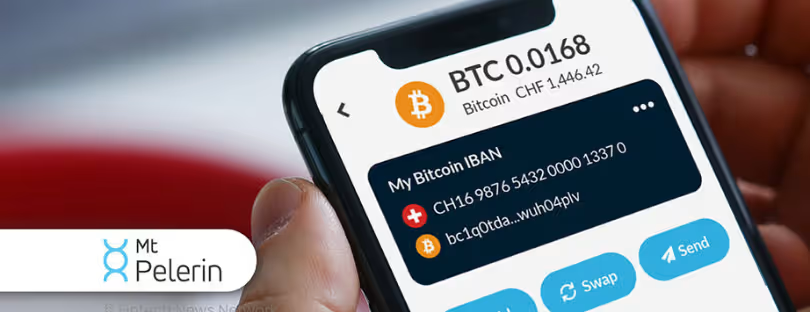
iPhone 14 vs Garmin inReach: Can Your Phone Replace Your SOS Device?
Have you ever been staring out at a breathtaking vista, only to be yanked back to reality by the dreaded “no service” notification? For outdoor enthusiasts, venturing beyond cell service can be both exhilarating and unnerving. It’s a calculated risk, a dance with the unknown, and a constant negotiation between pushing your limits and ensuring your safety. The key to a truly fulfilling wilderness experience lies in preparedness, and that includes having a reliable communication device. But with the recent announcement of satellite messaging capabilities on the iPhone 14, a question arises: can your smartphone finally replace a dedicated SOS device like a Garmin inReach? Garmin inReach vs iphone 14
In this article, we will dissect this technological face-off, weighing the pros and cons of each option to help you make the most informed decision for your next adventure.
When Cell Service Ends, Communication Choices Emerge
Imagine this: you’re deep in the backcountry, separated from your partner by a sudden snowstorm. Without cell service, traditional phones become glorified paperweights. This is where two distinct communication options come into play:
- The Dedicated SOS Device: Rugged and reliable, devices like the Garmin inReach offer features specifically designed for remote locations. They boast long battery life, built-in GPS, and emergency SOS buttons for fast response.
- The Smartphone with Satellite SOS: Apple’s iPhone 14 changes the game with built-in satellite messaging. This allows you to send texts and even location data, potentially connecting you with help or loved ones.
The Allure of Convenience: Why iPhones are Appealing
The iPhone 14’s satellite feature offers undeniable convenience. It’s a familiar device you likely already carry, eliminating the need for an additional gadget. Plus, with features like weather updates and basic maps, it’s a multi-purpose tool.
Here are some additional benefits of a smartphone with satellite SOS:
- Potentially Free Service: Apple offers a free trial period for satellite messaging, making it an economical option (at least initially).
- Seamless Integration: No need to learn a new platform; you utilize existing messaging apps you’re already familiar with.
The Rugged Reliability of a Dedicated SOS Device
While iPhones offer a compelling option, there are situations where a dedicated SOS device reigns supreme:
- Durability: Built for the elements, Garmins can withstand drops, rain, and extreme temperatures – things that can easily disable a phone.
- Battery Life: An inReach can last for days on a single charge, far exceeding the capabilities of most smartphones.
- SOS Functionality: Dedicated SOS buttons provide a clear, immediate way to signal for help, even if you’re unable to use your phone.
- Offline Navigation: Many inReach devices offer built-in GPS and topo maps, allowing you to navigate even without cell service.
Garmin inReach vs. iPhone 14: A Comparison for Off-Grid Communication
| Feature | Garmin inReach | iPhone 14 |
|---|---|---|
| Primary Function | Dedicated satellite communicator and GPS device | Smartphone with satellite connectivity (limited) |
| Satellite Network | Iridium (global coverage) | Globalstar (limited to US and Canada) |
| SOS Functionality | Two-way communication with rescue services | Emergency SOS via satellite (one-way) |
| Messaging | Two-way text messaging with any phone number | Limited to emergency contacts and rescue services |
| Navigation | Built-in GPS with maps and tracking | GPS and mapping apps (requires cellular or Wi-Fi) |
| Durability | Ruggedized for outdoor use | Water-resistant but not designed for harsh conditions |
| Battery Life | Days to weeks depending on usage | Hours to a day depending on usage |
| Additional Features | Weather forecasts, location sharing, compatibility with other Garmin devices | Various smartphone features like camera, apps, etc. |
| Cost | Requires device purchase and subscription plan | Requires iPhone 14 and compatible carrier plan |
Best For:
- Garmin inReach: Those who frequently venture off-grid, need reliable global communication, and prioritize safety features.
- iPhone 14: Those who primarily stay within cellular coverage, occasionally need emergency communication in North America, and want a multi-functional device.
| Feature | Garmin inReach | iPhone 14 | Winner |
|---|---|---|---|
| Global Coverage | ✅ Yes (Iridium) | ❌ No (limited to US and Canada) | inReach |
| Two-Way SOS | ✅ Yes (with rescue services) | ❌ No (emergency contacts only) | inReach |
| Messaging | ✅ Unlimited two-way texting | ❌ Limited to emergency contacts | inReach |
| Battery Life | ✅ Days to weeks | ❌ Hours to a day | inReach |
| Durability | ✅ Ruggedized for extreme conditions | ❌ Water-resistant (not for extreme conditions) | inReach |
| Offline Maps | ✅ Yes (built-in) | ❌ Requires cellular or Wi-Fi | inReach |
| Cost | ???? Requires device + subscription | ???? Requires iPhone 14 + compatible carrier plan | Varies |
As you can see in the comparison table, the Garmin inReach does appear to be a more robust and reliable option for off-grid communication, especially for those who:
- Venture into remote areas: The inReach’s global coverage, two-way SOS, and offline maps make it a lifesaver in emergencies far from cellular service.
- Prioritize safety: Its rugged build, long battery life, and dedicated SOS button offer peace of mind in challenging conditions.
- Require frequent communication: The inReach’s unlimited texting capabilities are ideal for staying in touch with loved ones or coordinating logistics.
However, the iPhone 14’s satellite feature can be a valuable tool for casual adventurers who:
- Mainly stay within cellular range: The iPhone’s other features (camera, apps, etc.) make it a more versatile everyday device.
- Need occasional emergency contact: While limited, the satellite SOS can still be a lifesaver in a pinch.
- Prefer a familiar interface: Using your existing messaging apps is more intuitive than learning a new device.
Ultimately, the best choice depends on your individual needs and priorities. Consider how often you venture off-grid, the level of risk involved in your activities, and your budget.
READ MORE: Qualcomm introduces new satellite messaging for Android smartphones
The Future of Backcountry Communication: What Lies Ahead?
Apple’s foray into satellite communication is a game-changer. It signifies a growing emphasis on reliable backcountry communication. This likely means further innovation from both smartphone manufacturers and dedicated SOS device companies.
Here are some possibilities for the future:
- Improved Durability: Phone manufacturers may prioritize ruggedness, blurring the lines between smartphones and dedicated SOS devices.
- Advanced Features: We might see expanded functionalities in satellite communication, like two-way texting and data transfer.
- Subscription-Based Services: As satellite networks expand, subscription models for smartphone-based SOS features might emerge.
Final Thoughts: Stay Connected, Stay Safe Garmin inReach vs iphone 14
Whichever communication tool you choose, ensure you understand its limitations and capabilities. Always be prepared with a backup plan. The key is to have options, so you can stay connected and safe, no matter where your adventures take you.











